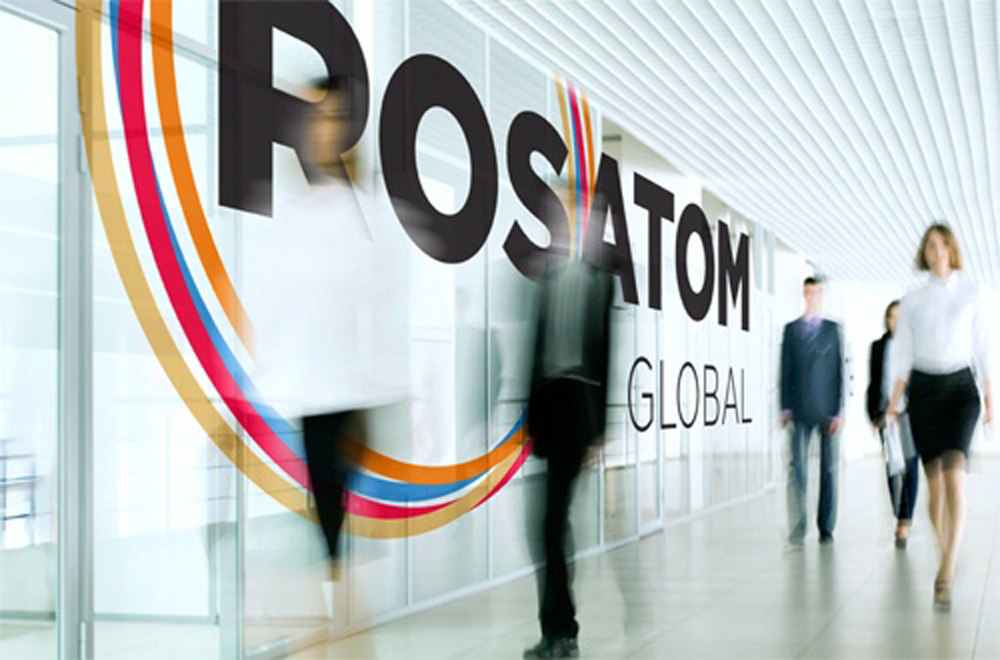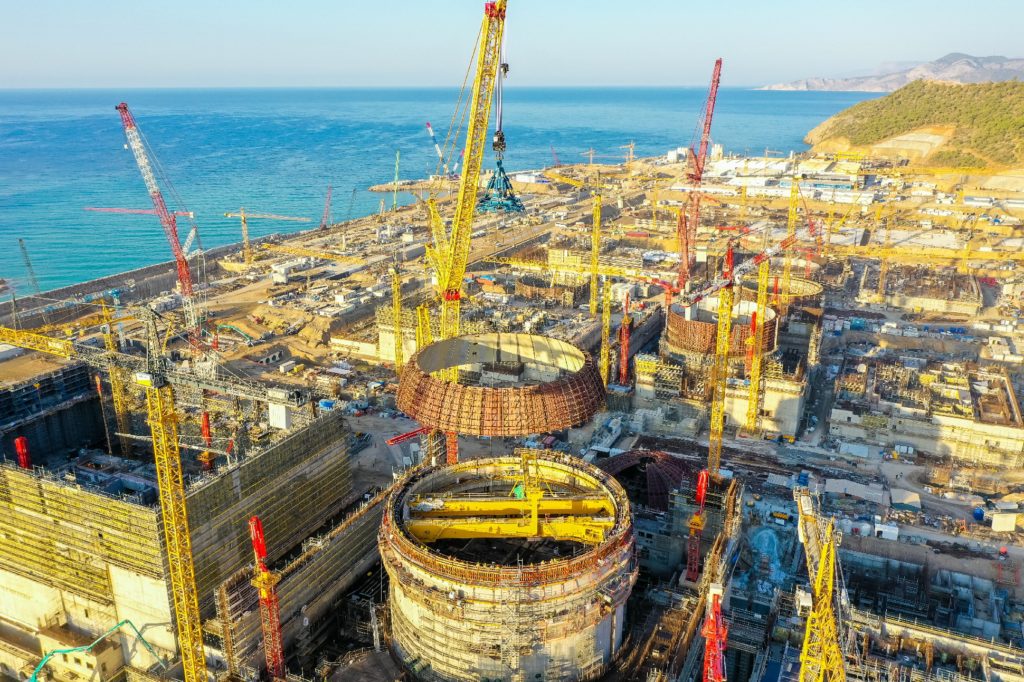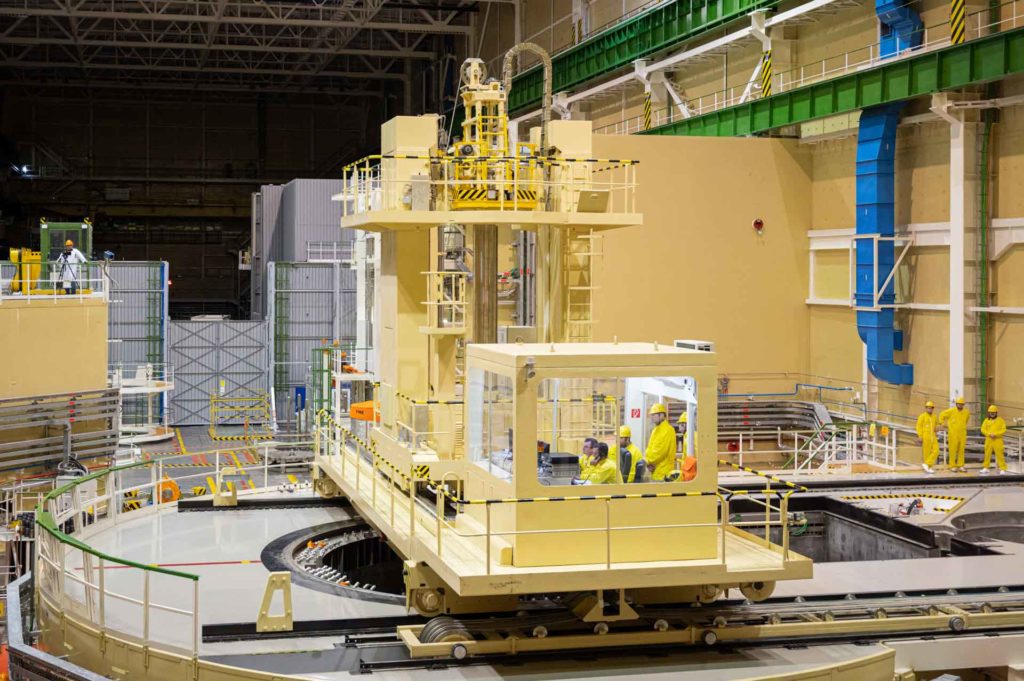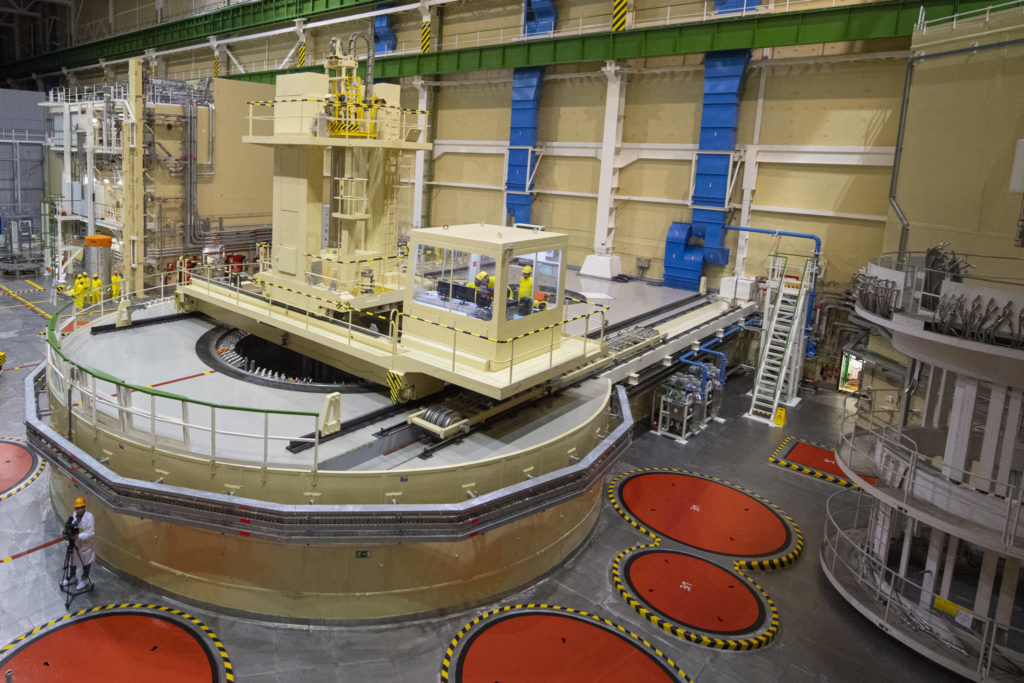
Cooperation in Nuclear Energy
back to contentsThis column is usually dedicated to the global trends in nuclear technology and power generation, but this time we will talk about Rosatom in the context of a (largely imaginary) trend of ‘gaining independence’ from anything associated with Russia. In late February, the British journal Nature published an online article on the levels of the world’s dependence on Rosatom. The facts show, however, it would be more correct to talk about pragmatism and goodwill-based cooperation.
The article was published on the website of Nature Energy, a ‘monthly, online-only journal publishing the best research on energy, from its generation and distribution to the impacts energy technologies and policies have on societies’. We could not ignore an analytical article in such a high-ranking publication.
The most reasonable point made in the article concerns the significance of the Russian nuclear corporation for the global nuclear power industry. Since its inception, Rosatom has become increasingly active in the international nuclear power market, and has become a leading provider of key services, the article says. Construction of as many as ten reactor units started between 2007 and 2017, and between 2009 and 2018, the company accounted for 23 of 31 orders placed and about a half of the units under construction worldwide. Through its subsidiary TVEL, Rosatom also provides fuel supplies, controlling 38% of world’s uranium conversion and 46% of uranium enrichment capacity in addition to decommissioning and waste disposal. “In sum, Russia was the supplier in around half of all international agreements on nuclear power plant construction, reactor and fuel supply, decommissioning or waste between 2000 and 2015. Its main nuclear power competitors—China, France, Japan, Korea and the United States—accounted for another 40%, combined,” the authors emphasize. Neither the Fukushima accident nor political turmoil has affected Rosatom’s market position.
It is curious, though, that the authors did not cite any data after 2018. Let us fill in the gap. According to the 2021 annual report of AtomEnergoProm (Rosatom’s holding company for its civil nuclear assets), the company was the global leader in terms of international NPP construction projects (35 reactors) and uranium enrichment (38% of the world market), and also ranked second worldwide uranium reserves and uranium mining (15% of the world market) and third in terms of nuclear fuel production (17% of the world market). Since then, despite thousands of sanctions imposed on Russia, only Finland suspended a power plant construction project with Rosatom, decreasing the corporate portfolio to 34 power units in the pipeline.

It is also stressed in the article that Rosatom’s main advantage lies in its capacity to be a ‘one stop nuclear shop’ for all needs, the only supplier providing an ‘all-inclusive package.’ “The way Rosatom designs its projects also makes it a convenient partner for nuclear newcomers. While details of contractual agreements vary from case to case, the developer takes care of the entire process until the plant is ready to use and can be handed over to local (Russian-trained) nuclear experts to operate,” the article says. True.
Logic lost
If we follow the authors’ argument, those strengths give Rosatom an opportunity to use its nuclear construction projects ‘to exert political pressure and to project power globally.’ But first, ‘Russia exerts political pressure’ does not directly ensue from ‘Rosatom has strengths’ – there should be some logical transition from one statement to the other, at least for the sake of decency. There isn’t one, however. More than that, the very next sentence says a completely opposite thing: “Minin and Vlček, having studied the behavior of Rosatom and its relationship with the Russian state, argue that the company is primarily a profit-seeking entity with a high degree of autonomy and growing self-sufficiency.” And the quoted summary of S. Thomas’ article on Rosatom’s ‘inability’ to complete all of its projects neither confirms nor refutes the above statement – it is simply a talk on a different topic. Thus, it could be argued that the article is logically incoherent and, at times, contradictory.
Errors and inaccuracies
There are factual errors in Nature’s article. For example, it lists the Tarapur Atomic Power Station as one of Rosatom’s projects. In fact, its first two power units with boiling water reactors were built by the US companies. The other two units with heavy water reactors were built by Indian companies.
The article first claims that ‘Rosatom boasted as many as 73 different projects in 29 countries’ and then, just a few lines below, that ‘Russia’s nuclear energy diplomacy has been formalized in 54 countries.’ The second figure is closer to the truth.

The authors also claim that hostilities in Ukraine in 2022 caused the cancellation of NPP construction projects in Finland and also in Jordan and Slovakia. False. Jordan made a decision back in 2018 that they needed a small modular reactor (SMR) rather than a large nuclear power plant and last May signed an agreement with Rusatom Overseas (part of Rosatom) to develop an SMR project. The negotiations are continuing. Slovakia’s nuclear community would probably be surprised by the claim because Mochovce 3 with a VVER-440 reactor was brought online on January 31. Connection of Mochovce 4 with the same-type reactor is expected soon. This means that Slovakia spent the whole of 2022 completing the construction of Russian-designed units.
Pressure from the other side
The article in Nature contains another blooper associated with Slovakia. The authors remind that Slovakia permitted Russian planes with nuclear fuel to land in its airport despite the flight ban imposed by the EU. This example is meant to prove that ‘dependencies on nuclear fuel imports from TVEL/Rosatom (which also continues to supply Bulgaria, Czechia and Finland and Poland’s research reactor), combined with power-system inflexibility and overreliance on a single large nuclear power plant, exacerbates the vulnerability to supply disruptions’. But it shows exactly the opposite. Slovakia’s vulnerability was exacerbated not by its dependence on TVEL supplies but by anti-Russian EU sanctions that closed the skies to aircraft from Russia.
As for fuel supplies for the research reactor in Poland, the contract was signed in 2015 (i.e., after Crimea’s accession to Russia). Prior to that, the Polish reactor had been running on nuclear fuel from France. Given these details, it should be recognized that the fuel supply contract is definitely not a legacy because Poland was free to choose a supplier, and it chose Rosatom.

The authors of the article found a single example of Rosatom’s failure to deliver nuclear fuel. They refer to an article on The Insider website: “There was also an incident in 2005 that went unnoticed by the Ukrainian and Russian media amid the ‘Orange Revolution’: Ukraine received a batch of defective TVEL assemblies filled with tiny spheres. Loading them into the reactor would have provoked deformation, but the Ukrainian specialists detected the defect in time and sent the assemblies back to the manufacturer. The defect was officially explained by failures of the assembly line in Russia, after which the investigation halted.”
This quote shows that it is impossible to attribute anything beyond a technical fault to the event – even in the article devoted to ‘energy weapons.’ No attempt – not even the slightest – to exert political pressure in the energy industry, much less in the nuclear industry, would have gone unnoticed on the back of the Orange Revolution. Referring to that delivery now (the article was published in the fall of 2022) is nothing more than a shadow theater.
To sum it up, the article in Nature and its sources of information fail to cite even a remotely convincing example in Rosatom’s entire history of how Russia applies political pressure through the nuclear power industry.
Is it even real?
The article is built around infographics about a potential share of power that Russian-designed nuclear power plants will be able to generate if all the announced projects are completed by 2040, and around a ranking table titled ‘Levels of Nuclear Cooperation with Russia.’ This table is laughable for anyone with the slightest knowledge of the situation. How can Turkey where Rosatom is building a four-reactor nuclear station at Akkuyu under a BOO contract be compared to Spain where Rosatom has no construction projects? And how can the level of cooperation with Spain be higher than cooperation with Armenia that operates a Russian-designed nuclear power plant and considers construction of another one?
As for the infographics, it is no less curious. And notes to them raise questions, too. It is said in a paragraph about the countries generating much of their electricity at Russian-designed nuclear power plants that there is a ‘substantial concern among its partners in the European Union and the North Atlantic Treaty Organization.’ In a paragraph about the countries receiving some of their electric power from Russian-designed plants, it is said there is “some international concern, primarily in Israel and the United States.” It appears from the text that the degree of dependence is determined not so much by the share of Russian-sourced nuclear in the energy mix as by the degree of concern of third parties.
Generally speaking, dependence estimates are discrepant. For instance, the share of supply may be high but the level of cooperation is medium. There seems to be some dependence but the example of Ukraine shows dependence can be overcome. Another example has a high level of cooperation but a low share of electricity supply. This information allows us to make the only reasonable conclusion: the degree of cooperation, that is, a potential impact on nuclear energy security does not correlate with the future amount of electricity supplies from Russian-designed reactors and even less so with political influence.
Finally, let us focus on the most important point, energy weapons. The authors of the article in Nature based their understanding of nuclear energy weapons on the definition given by Karen Smith Stegen: “The term ‘energy weapon’ denotes that an energy supplier state uses its resources as a political tool to either punish or coerce (or sometimes a combination of both) its customers.”
But the current situation regarding the construction of nuclear power plants and supply of nuclear fuel is different. Weapons as a political tool of punishment and coercion have been used by third parties against both the customers and suppliers. The EU closes the skies, and the countries buying fuel face supply problems. The USA imposes sanctions, and no ship carrying cargo for the Rooppur Nuclear Power Plant can enter Bangladeshi waters. But thanks to the high professionalism of Rosatom employees and the nuclear communities of other countries, nuclear power plants continue to be built and fuel continues to ensure clean energy generation by Russian-designed reactors.

The political instrument of punishment and coercion was used, for example, against the freight forwarders who delivered fuel to the Rivne Nuclear Power Plant. They were held hostage for a month and, although they were civilians, were finally exchanged as prisoners of war. Worthy of note is that the fuel on which the Rivne NPP ‘depends’ was not returned.
Speaking about the hypothetical problems with supplies, which are assessed to have the highest risk, we should keep in mind some important points. Firstly, we have stressed more than once that the nuclear fuel cycle moves at a different speed than the hydrocarbon market or the decision-making process in politics. Refueling takes place once every 12 to 24 months. Fuel is usually delivered to the site about a month before the scheduled refueling, so it is always possible to wait out the most acute phase. Besides, there is a possibility in principle of rearranging fuel assemblies in the reactor core to extend the time in operation by several months. Secondly, the critics have never been able to dig up any case of Rosatom intentionally creating problems for the sake of political pressure or achieving political results – neither after 2007, nor before, because it never happened.
Some conclusions
The article in Nature is a pure linguistic manipulation: business-like and profit-making cooperation is called ‘dependence,’a word with a trail of negative connotations. The article contains estimates and calculations but presents no facts showing Rosatom’s malice or political pressure. In the absence of facts, the ideas in the article jump from ‘Rosatom is dangerous’ to ‘dependence on Rosatom is exaggerated’ and concentrates on ‘getting rid of Rosatom is possible but will take a lot of time.’
And money, we would add. The words of Rosatom’s customers prove that supplies and, in general, cooperation with Rosatom are beneficial for them, first and foremost, in terms of business and technology. Here is a recent example. Janne Wallenius, Professor at the Royal Institute of Technology (Sweden) and CTO at Blykalla developing a lead-cooled SMR, told Radio Ekot they had suspended cooperation with Rosatom in testing structural materials for the reactor. A research reactor in Belgium is an alternative to conducting tests in Russia but this will be longer and three times more expensive. However, Swedish nuclear engineers hope to resume cooperation with Russia. “We are waiting for the war to end,” the Swedish scientist said.
It should be admitted that there are only a few countries with developed nuclear technology in the world. If a country wants to have this clean and reliable source of power, which also stimulates the economic development, it can develop it on its own – or buy ready-made technology. The first option, however, implies cooperation, too. China’s history and the above mentioned example of Sweden show that the nuclear industry develops in partnerships. If you cut ties with a supplier, you do not become independent – you just become dependent on another supplier, often to your detriment. Gas is an example of how this works: the European countries refused to buy Russian gas and were forced to buy more expensive US LNG, exacerbating the political and military dependence on the United States with energy.
Lastly, the article in Nature demonstrates clearly that a wide variety of countries across continents – all having different levels of technology, political systems and cultures – see Rosatom as a partner. Some partnerships started years ago, and some start today – we regularly inform our readers about the new agreements signed. And these are the most convincing facts showing that cooperation with Rosatom is a conscious and free choice.




